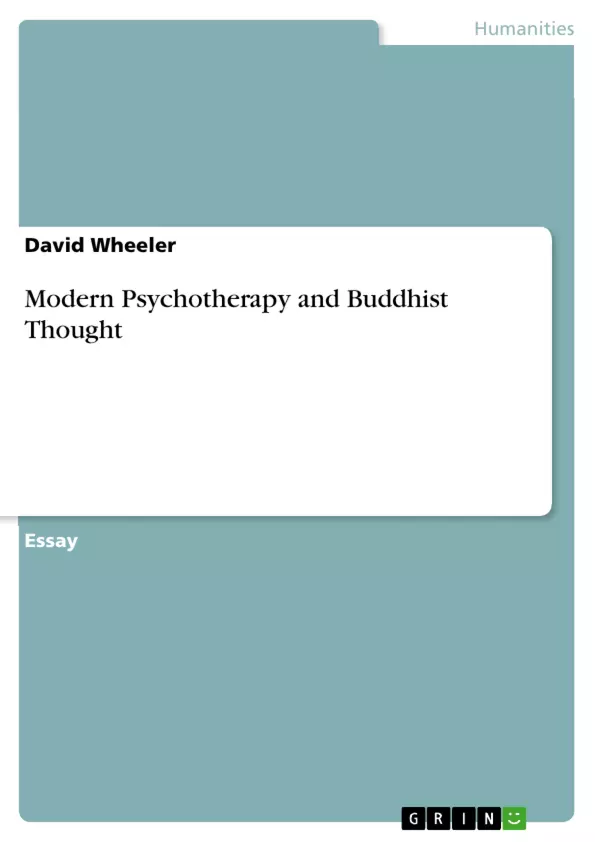As a final research topic of exploration, I have chosen to explore the Inner Critic due to its clear prevalence in the lives of my clients, but also for its presence in my own personal life, which has often kept me from realizing a dream or finishing a project. For as long as I can remember I have heard friends and family say to me: “David, you are so hard on yourself!” It wasn’t until I began my own psychotherapeutic work that I was able to see the truth in these claims and to concern myself with how to dampen the Critic’s voice. Of great surprise and interest to me was the discovery that at the root of healing Inner Critic wounding is critical compassion: the instrument of self-compassion. Taking a historical view of psychology it is possible to argue that the root of the concept of the Inner Critic lies in the work of Jung and is related, although not the same as Jung’s concept of the Shadow. Young-Eisendrath and Dawson (2008, p.98) write of … that unwelcome side of our nature that Jung calls the shadow. This is made up of all the tendencies, motives and characteristics that we have barred from consciousness, whether deliberately or not. The admission of the shadow is the sine qua non of individuation.
Inhaltsverzeichnis (Table of Contents)
- Critical Compassion: the Role of Self-Compassion in Healing the Inner Critic
- Introduction
- The Inner Critic: Its Prevalence and Impact
- The Importance of Self-Compassion
- Historical Context: Jung and the Shadow
- The Shadow as a Negative and Hostile Force
- The Shadow and the Inner Critic
- The Need for Integration and Recognition
- The Inner Critic: Its Nature and Function
- The Inner Critic as a Voice in Our Heads
- The Tone and Character of the Inner Critic
- The Cultural and Personal Influences on the Inner Critic
- The Function of the Inner Critic: Avoiding Primal Pain
- The Negative Effects of the Inner Critic
- Compassion-Focused Therapy: A Path to Healing
- Buddhist Teachings on Compassion
- Self-Compassion as a Tool for Healing the Inner Critic
Zielsetzung und Themenschwerpunkte (Objectives and Key Themes)
This paper explores the psychological concept of the inner critic and its origins in Jungian psychology. It then investigates the role of self-compassion in healing inner critic wounding and its connection to Buddhist beliefs and practices.
- The nature and function of the inner critic
- The relationship between the inner critic and the Jungian concept of the Shadow
- The importance of self-compassion in combating the inner critic
- The application of Buddhist teachings on compassion to psychotherapy
- Exploring the concept of critical compassion as a tool for healing
Zusammenfassung der Kapitel (Chapter Summaries)
- The paper begins by introducing the concept of the inner critic and its widespread prevalence in both everyday life and therapy. The author shares personal experiences and highlights the potential for inner critic wounding to impact identity and self-esteem.
- The paper delves into the historical context of the inner critic, drawing connections to Jung's concept of the Shadow. It explores how both concepts are seen as negative forces that hinder personal growth and happiness, with emphasis on the need for recognition and integration.
- The paper then examines the nature and function of the inner critic. It describes the critic's voice, its emotional tone, and its cultural and personal influences. The chapter also explains how the inner critic serves to avoid primal pain, stemming from early childhood experiences.
- The paper explores compassion-focused therapy and its potential for healing inner critic wounding. It highlights the relevance of Buddhist teachings on compassion and the role of self-compassion in effectively tackling the inner critic.
Schlüsselwörter (Keywords)
Inner critic, self-compassion, compassion-focused therapy, Buddhist teachings, Jungian psychology, Shadow, primal pain, psychological health, individuation, critical compassion, therapy.
- Quote paper
- David Wheeler (Author), 2011, Modern Psychotherapy and Buddhist Thought, Munich, GRIN Verlag, https://www.grin.com/document/175046



